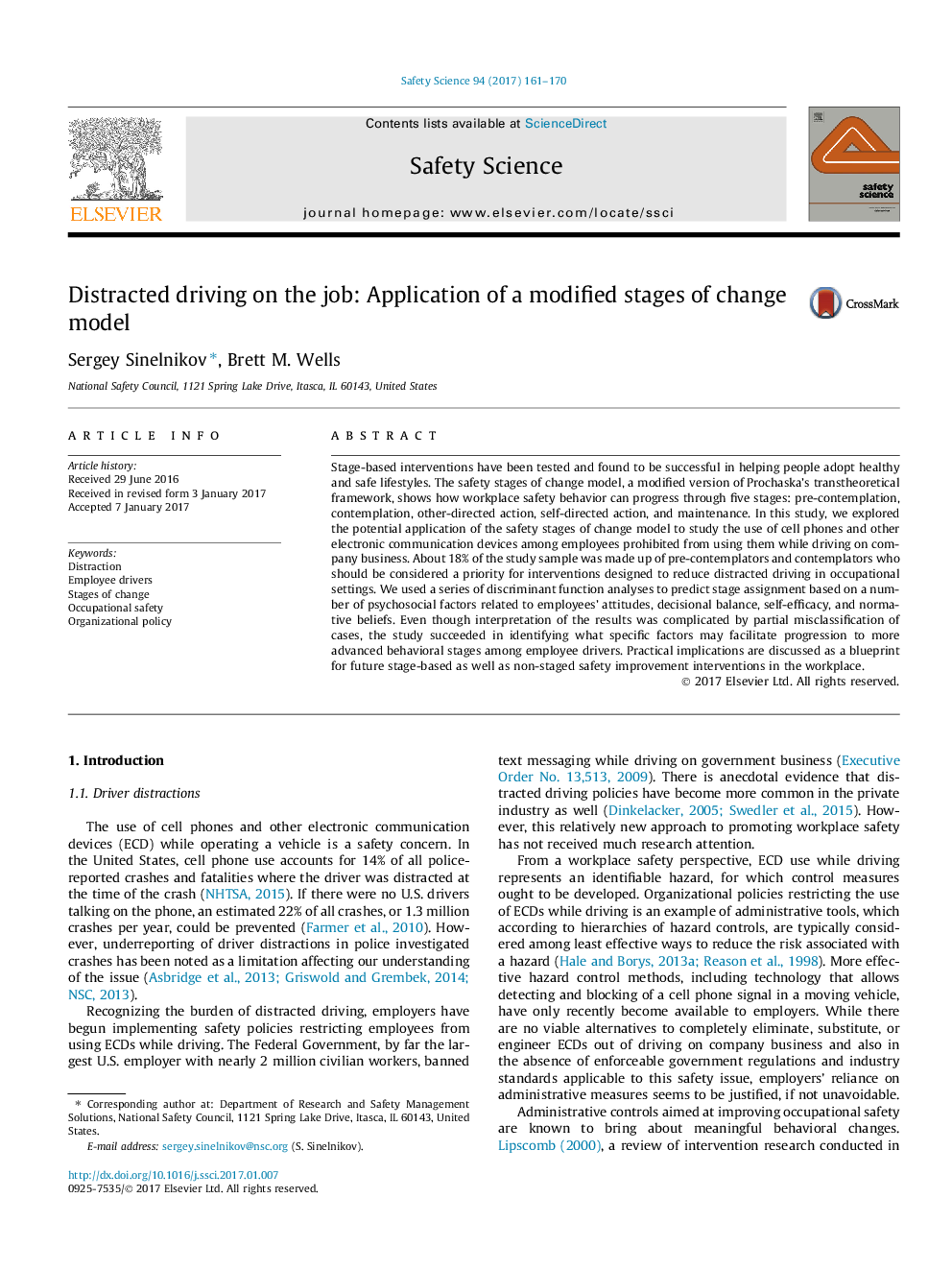| Article ID | Journal | Published Year | Pages | File Type |
|---|---|---|---|---|
| 4981244 | Safety Science | 2017 | 10 Pages |
Abstract
Stage-based interventions have been tested and found to be successful in helping people adopt healthy and safe lifestyles. The safety stages of change model, a modified version of Prochaska's transtheoretical framework, shows how workplace safety behavior can progress through five stages: pre-contemplation, contemplation, other-directed action, self-directed action, and maintenance. In this study, we explored the potential application of the safety stages of change model to study the use of cell phones and other electronic communication devices among employees prohibited from using them while driving on company business. About 18% of the study sample was made up of pre-contemplators and contemplators who should be considered a priority for interventions designed to reduce distracted driving in occupational settings. We used a series of discriminant function analyses to predict stage assignment based on a number of psychosocial factors related to employees' attitudes, decisional balance, self-efficacy, and normative beliefs. Even though interpretation of the results was complicated by partial misclassification of cases, the study succeeded in identifying what specific factors may facilitate progression to more advanced behavioral stages among employee drivers. Practical implications are discussed as a blueprint for future stage-based as well as non-staged safety improvement interventions in the workplace.
Related Topics
Physical Sciences and Engineering
Chemical Engineering
Chemical Health and Safety
Authors
Sergey Sinelnikov, Brett M. Wells,
